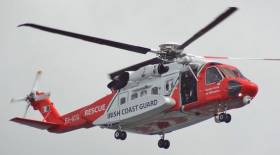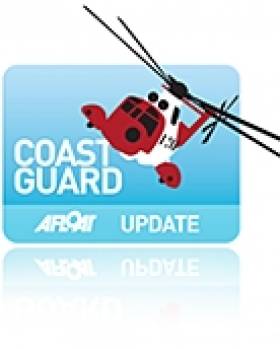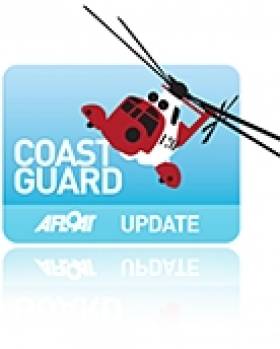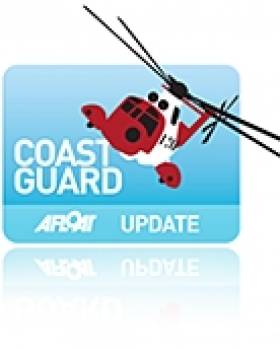Displaying items by tag: Sikorsky S92
Irish Coast Guard SAR Service Using New S92 Helicopters Reaches 10,000–Hour Milestone
The Irish Coast Guard has achieved the significant milestone of 10,000 Sikorsky S92 flight hours in its Irish Search-and-Rescue (SAR). The five new technology Sikorsky S92 aircraft have completed more than 3100 missions, operating from the bases in Sligo, Waterford, Shannon and Dublin. With the introduction of the S92, the service ushered in a stepped change in operational effectiveness and flight safety. The fleet is equipped with state-of-the-art autopilot functions, auto hover and flight director upgrades. This has led to improved safety and higher levels of aircraft availability.
Chris Reynolds director of the Coast Guard said: ‘IRCG Search and Rescue helicopters operating out of four bases located across Ireland ensure that we continue to assist mariners, hill walkers, those living in rural areas and our islands communities”
Case Studies:
A significant percentage of SAR missions ensure critically ill people reach hospitals within the so called ‘golden hour’, giving them the best chance of a full recovery. For heart attack victims in rural communities, ensuring fast access to a specialist cardiac unit is vital. The speed and reliability of response is critical because the heart muscle starts to die within 80-90 minutes after it stops getting blood, and within six hours, almost all the affected parts of the heart could be irreversibly damaged.
When a pregnant woman living on an island off the Irish coast went into labour and found herself unable to get to hospital in July 2013, the SAR team were scrambled to take her to hospital. Impatient to make his/her arrival, labour was more advanced than initially believed and a baby boy was delivered by the crew’s winchman in the hospital corridor.
The waters around Ireland’s coastline can be both beautiful and wild. SAR Ireland’s crews have completed many missions miles offshore in some of the most challenging conditions. Here are two examples of a single night’s work.
· The 18th of September 2015 was a very busy shift for the crews of Waterford Rescue 117 (R117) and Shannon Rescue 115 (R115). Rescue115 was tasked by the Irish Coast Guard Station MRCC Valentia to Vessel Hanjin Cape Lambert approximately 170mls SW of Castletownbere, for an injured crewman. Due to the distance of the mission, R115 routed to Castletownbere refueling helipad. On arrival at the helipad, Rescue 115 was retasked to a more time critical medevac approximately 240mls SW Castletownbere to evacuate a 72 year old female with a suspected heart attack from cruise vessel Regal Princess. Rescue 117 (Waterford) was subsequently tasked to the Vessel Hanjin Cape Lambert. Rescue 115 lifted and met the Regal Princess 180mile SW Castletownbere. A Rescue 115 winchman was deployed to the vessel to assess the casualty’s condition. A Hi-line and stretcher technique were used to recover winchman and casualty back to the helicopter. R115 departed for Cork where the casualty was handed over for transfer on to Cork University Hospital.
· A crewman aboard a container ship about 100 miles off the coast of Ireland took ill recently and required medical evacuation. Two of Ireland’s Coast Guard helicopters were tasked in the long-range mission to the MV Atlantic Cartier and removed the man from the ship as he was suffering from chest pains. The Waterford-based aircraft (Rescue 117) reached the ship, located about 100 miles from Fastnet Rock, with the helicopter from Shannon (Rescue 115) providing top cover. The Irish Coast Guard Rescue Coordination Centre (RCC) in Valentia, Co Kerry, which coordinated the rescue, said the man was taken to Cork Hospital where he made a full recovery.
#Coastguard - What would have been the Irish Coast Guard's longest ever rescue mission was stood down at the last minute after the casualty in question was deemed to be in a stable condition.
According to the Irish Independent, the Shannon-based coastguard rescue helicopter was dispatched on the 300-nautical-mile mission to retrieve a man in his 70s from a cruise liner en route to Cobh from the United States.
The distance was so great that the helicopter, the new Sikorsky S-92 with the call sign Rescue 115, was forced to land on an offshore oil rig 180km off Kerry to refuel.
While there the chopper experienced a technical issue and was grounded for safety reasons while an engineer was sent to the oil rig on board Waterford's Rescue 117.
However, in the meantime a second doctor on board the MS Marina determined that the patient - who was feared to have had a stroke - was in a stable enough condition to be transferred to hospital upon the ship's arrival in Cobh early today.
The Irish Examiner confirms that the casualty was a 79-year-old American.
Coastguard Helicopter Gets State-Of-The-Art Imaging Systems
#COASTGUARD - Canada's L-3 Wescam has announced it will be providing electro-optical and infrared imaging systems for the Irish Coast Guard's revamped search and rescue helicopter fleet, starting with the new Sikorsky S-92 based at Shannon.
“This order pairs the most modern SAR helicopter with the most advanced EO/IR sensor to provide a vital capability for lifesaving missions,” said Paul Jennison, vice president of government sales and business development for L-3 Wescam.
The company describes its MXTM-15 system as a one-line replacement unit solution, which reduces installation weight by 25% and increases much-needed cabin space for transporting rescue victims.
The system’s digital infrared camera is capable of a 20% increase in visual range, allowing missions at night or in inclement weather to result in a higher search success rate.
In addition, the system comes with WESCAM’s MX-GEO Gen 3 software package which helps deliver maximum geographic location accuracy and significantly reduces operator fatigue that often arises in demanding and stressful SAR operations.
Imaging system upgrades are expected to be rolled out across the Irish Coast Guard's helicopter fleet by the end of next year.
New Helicopter for Irish Coast Guard is Completed
#COASTGUARD - Sikorsky has completed production of a new S-92 helicopter for the Irish Coast Guard under the rescue service's €500 million deal with CHC Ireland.
The US-based helicopter firm and CHC formalised the purchase on Wednesday (21 December) with Irish Coast Guard director Chris Reynolds during a hand-over ceremony at the S-92 commercial helicopter assembly facility in Coatesville, Pennsylvania.
Equipped for dedicated search and rescue (SAR) operations, the helicopter will provide coverage for deep Atlantic Ocean missions, service Ireland's offshore islands and provide rescue cover on the west coast from Cork to Galway.
The new aircraft will be based at Shannon and will replace the current coastguard SAR helicopter, a Sikorsky S-61, which has given 20 years of unbroken service.
According to Sikorsky, the S-92 is equipped with advanced systems and hardware, including an automated flight control system that enables the pilot to fly pre-programmed search patterns and perform delicate hover manoeuvres; a wireless intercom allowing a rescue swimmer to communicate with the crew; radio transceivers to communicate with ships and rescue services; a weather radar and infrared sensor; and a digital video system to record rescues.
Reynolds said the new helicopter - which joins four second-hand machines on a 10-year lease - represents a stepped improvement in Ireland's ability to care for and service its seagoing, coastal and island communities.
"I am very happy that the Coast Guard will operate what I consider to be the leading SAR helicopter in the world," he added.
As reported earlier this year on Afloat.ie, the new chopper is part of a deal that raised questions from a Fine Gael TD over allegations that a competing tender did not have a "good reputation".
Fergus O'Dowd questioning the contract with CHC Ireland after receiving documents in which Chris Reynolds said the Air Corps – whose helicopters are supplied by AgustaWestland - were uneqipped for the role and that no cost saving would be made if they took on the service.
Irish Coast Guard Chopper Deal Could Be Model for UK
The director of the Irish Coast Guard has outlined the thinking behind its recent €500m deal for helicopter search and rescue services.
Chris Reynolds told Rotorhub that a simplified model based on key critera was adopted when choosing a bigger for the contract, which was awarded to CHC Ireland last year.
"With our contract, we essentially wanted to continue with what we already had, but with new technology," he said.
Rotorhub reports that the Irish Coast Guard formed a Future Helicopter Study Group to discuss the service's needs before the tender process which led to the 10-year deal for five Sikorsky S-92s.
The process stands in contrast to SAR-H, the UK's programme to overhaul its helicopter fleet which collapsed last year.
"If the UK needs to be looking at a new interim contract, they could look at how we did it," added Reynolds.
Rotorhub has more on the story HERE.


































































